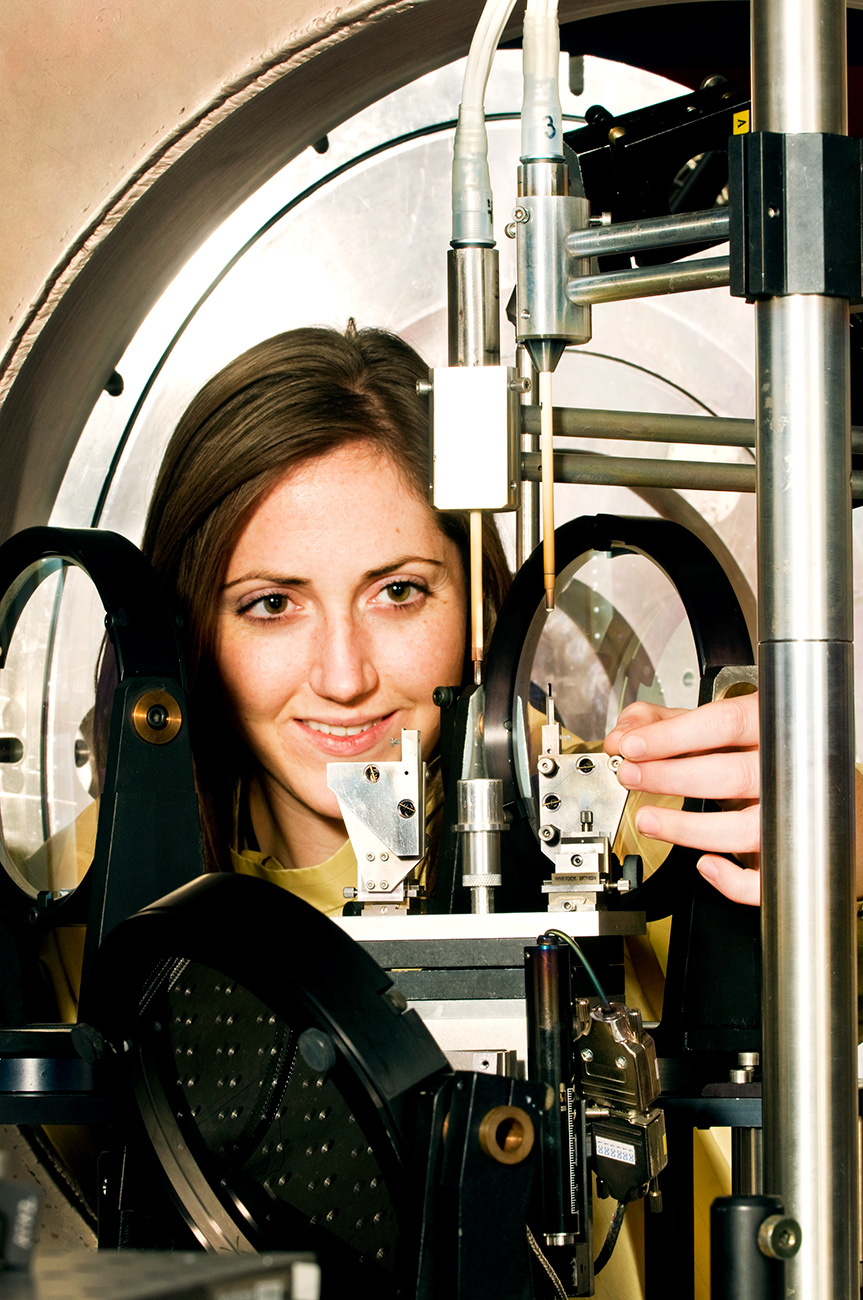Supernova explosions, triggered when the fuel within a star reignites or its core collapses, launch a detonation shock wave that sweeps through several light years of space from the exploding star in just a few hundred years. But not all such explosions are alike and some, such as Cassiopeia A which is 11,000 light years from the Earth, show puzzling irregular shapes made of knots and twists.
To recreate a supernova explosion in the laboratory an international team, led by researchers from the University of Oxford, used the Vulcan laser facility at the Science and Technology Facilities Council’s (STFC) Rutherford Appleton Laboratory to investigate what might cause these peculiar shapes.
Vulcan is a multi-beam laser facility which can combine long and short pulse beamlines up to Petawatt (1015 Watts) powers. The facility is available to the UK and international research community and it's unique because it delivers a focused beam – which for 1 picosecond (0.000000000001 seconds) is 10,000 times more powerful than the National Grid – to support a wide-ranging program in fundamental physics and advanced applications.

Jena Meinecke, one of the University of Oxford researchers, using
the Vulcan laser. Credit: STFC
The team focused three laser beams onto a carbon rod target, not much thicker than a strand of hair, in a low density gas-filled chamber. The enormous amount of heat generated by the laser – more than a few million degrees Celsius – caused the rod to explode, creating a blast that expanded out through the low density gas.
Rob Clarke leads the Experimental Science group at STFC’s Central Laser Facility. He said, “The Oxford experiment is a great demonstration of the use of high power lasers for studying such astrophysical phenomena. Our laser, engineering and scientific staff are used to designing highly complex experiments which enable us to perform experiments at these extreme conditions within the laboratory.”
In the experiments the dense gas clumps or gas clouds that surround an exploding star were simulated by introducing a plastic grid to disturb and introduce turbulence into the expanding blast wave.
‘The experiment demonstrated that as the blast of the explosion passes through the grid it becomes irregular and turbulent, just like the images from Cassiopeia,’ said the University of Oxford’s Professor Gianluca Gregori, who led the study which has now been published in Nature Physics.





Comments